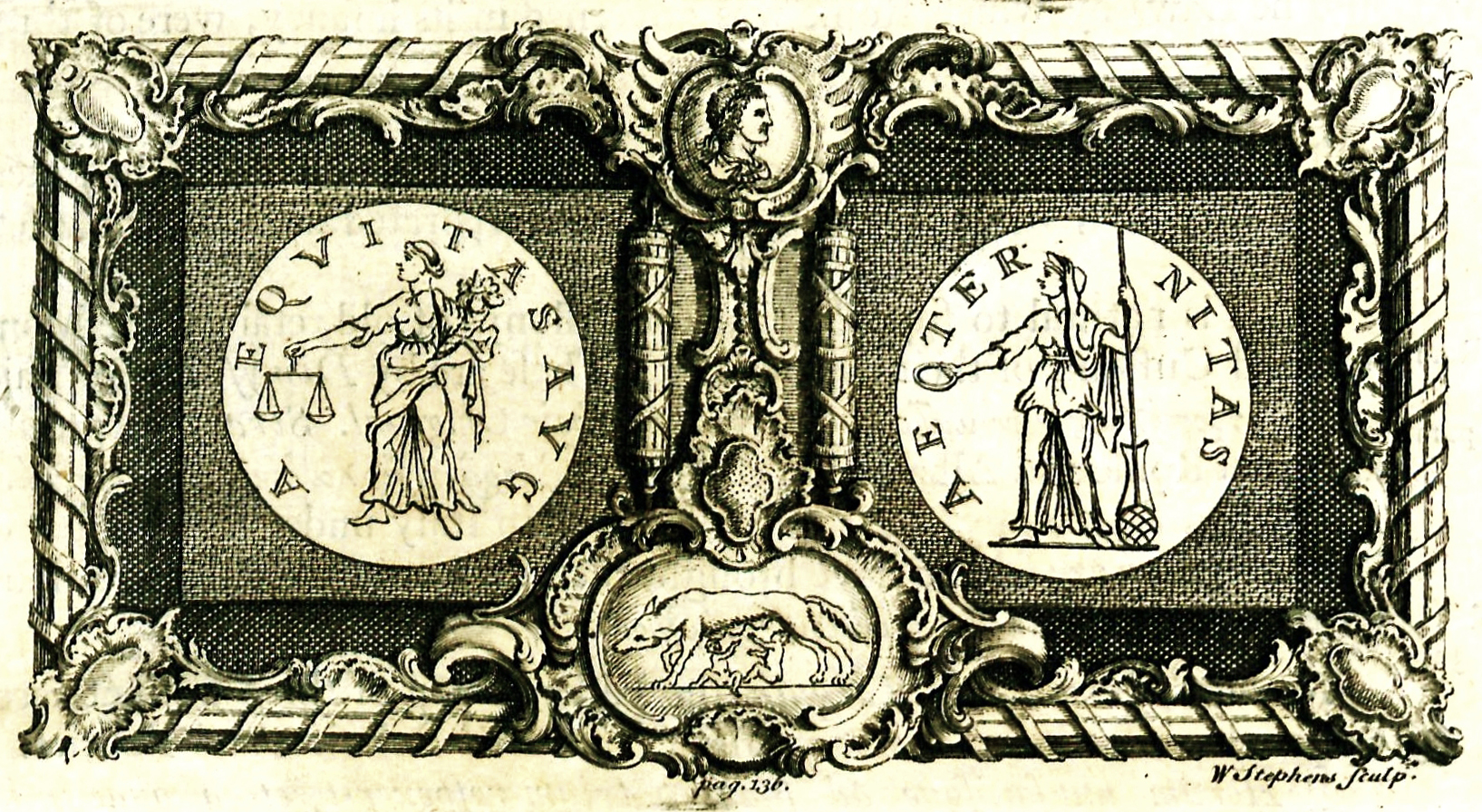Difference between revisions of "Elements of the Civil Law"
Mvanwicklin (talk | contribs) m |
m |
||
| Line 3: | Line 3: | ||
{{BookPageInfoBox | {{BookPageInfoBox | ||
|imagename=TaylorElementsOfCivilLaw1769TitlePage.jpg | |imagename=TaylorElementsOfCivilLaw1769TitlePage.jpg | ||
| − | |link=https:// | + | |link=https://wm.primo.exlibrisgroup.com/permalink/01COWM_INST/g9pr7p/alma991023652819703196 |
|shorttitle=Elements of the Civil Law | |shorttitle=Elements of the Civil Law | ||
|author=[[:Category:John Taylor|John Taylor]] | |author=[[:Category:John Taylor|John Taylor]] | ||
| Line 28: | Line 28: | ||
Bound in contemporary full calf with red morocco, gilt-lettered label and gilt bands to spine. Includes the early twentieth century armorial bookplate of Lord Alington of Crichel, Dorset, on the front pastedown. | Bound in contemporary full calf with red morocco, gilt-lettered label and gilt bands to spine. Includes the early twentieth century armorial bookplate of Lord Alington of Crichel, Dorset, on the front pastedown. | ||
| − | Images of the library's copy of this book are [https://www.flickr.com/photos/wolflawlibrary/sets/72157637877032395 available on Flickr.] View the record for this book in [https:// | + | Images of the library's copy of this book are [https://www.flickr.com/photos/wolflawlibrary/sets/72157637877032395 available on Flickr.] View the record for this book in [https://wm.primo.exlibrisgroup.com/permalink/01COWM_INST/g9pr7p/alma991023652819703196 William & Mary's online catalog.] |
Revision as of 11:19, 26 October 2021
by John Taylor
| Elements of the Civil Law | |
|
Title page from Elements of the Civil Law, George Wythe Collection, Wolf Law Library, College of William & Mary. | |
| Author | John Taylor |
| Published | London: Charles Bathurst |
| Date | 1769 |
| Edition | Third |
| Language | English |
| Pages | ix, [1], 584, [12] |
| Desc. | Folio (29 cm.) |
| Location | Shelf F-3 |
John Taylor (1704 – 1766) was a classical scholar and English clergyman.[1] Educated at St John's College in Cambridge, Taylor received his BA in 1725 and MA in 1728.[2] Having studied both Greek oratory and Greek law, he turned to the law as an alternative career to the church.[3] In 1742, Taylor was admitted to Doctors' Commons, a society of lawyers practicing civil law. Around this time, he became a mentee of Lord Carteret, later Lord Granville. Five years later, Taylor resigned from Doctors' Commons and revisited his first choice of career, the church, becoming ordained as deacon and priest in 1647.[4] His second career eventually led to appointments as archdeacon of Buckingham and chancellor of the diocese of Lincoln.[5]
In 1752-53, Taylor was appointed as a tutor to Granville's grandsons while they were undergraduates at St John's College.[6] Granville wanted his grandsons to receive a good foundation in the principles of civil law, so Taylor drew up lengthy notes on the topic[7] which were first published as Elements of the Civil Law in 1755. The abridged version, Summary of the Roman Law, was published in 1773.[8] Topics included the history of Roman law, public and private law, justice and equity, the law of nature, the law of nations, civil law, sources of Roman law, and the law of persons and property.[9] Taylor relied on the works of Justinian, as well as Greek and Latin classical authors and modern writers. Elements of the Civil Law was reprinted in 1755, 1756, 1769, and 1772 and reached a fourth edition in 1828.[10] One writer summed up the work, "Taylor's Elements of the Civil Law are, perhaps, more than any other work, calculated to assist in the exposition of the mutual relation of the legal sciences, and the general literature of ancient Rome."[11]
Evidence for Inclusion in Wythe's Library
Listed in the Jefferson Inventory of Wythe's Library as Taylor’s civil law. 4to. and given by Thomas Jefferson to James Dinsmore. Brown's Bibliography[12] includes the third edition (1769) based on the copy Jefferson sold to the Library of Congress.[13] George Wythe's Library[14] on LibraryThing notes "Precise edition unknown. Quarto editions were published at Cambridge in 1755, and at London in 1756, 1769 and 1786." The Wolf Law Library followed Brown's advice and purchased a copy of the the third edition.
Description of the Wolf Law Library's copy
Bound in contemporary full calf with red morocco, gilt-lettered label and gilt bands to spine. Includes the early twentieth century armorial bookplate of Lord Alington of Crichel, Dorset, on the front pastedown.
Images of the library's copy of this book are available on Flickr. View the record for this book in William & Mary's online catalog.


